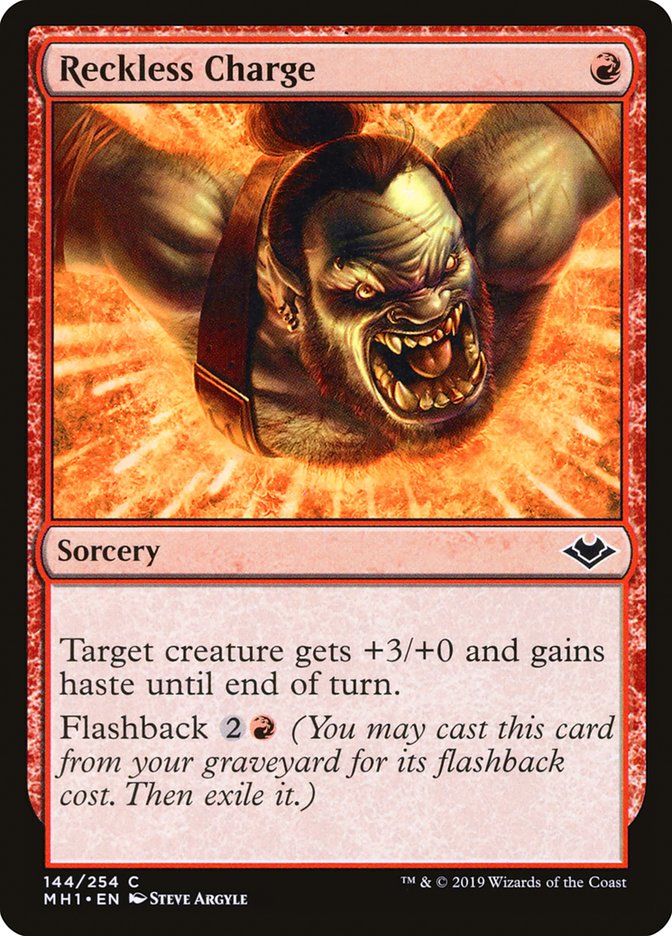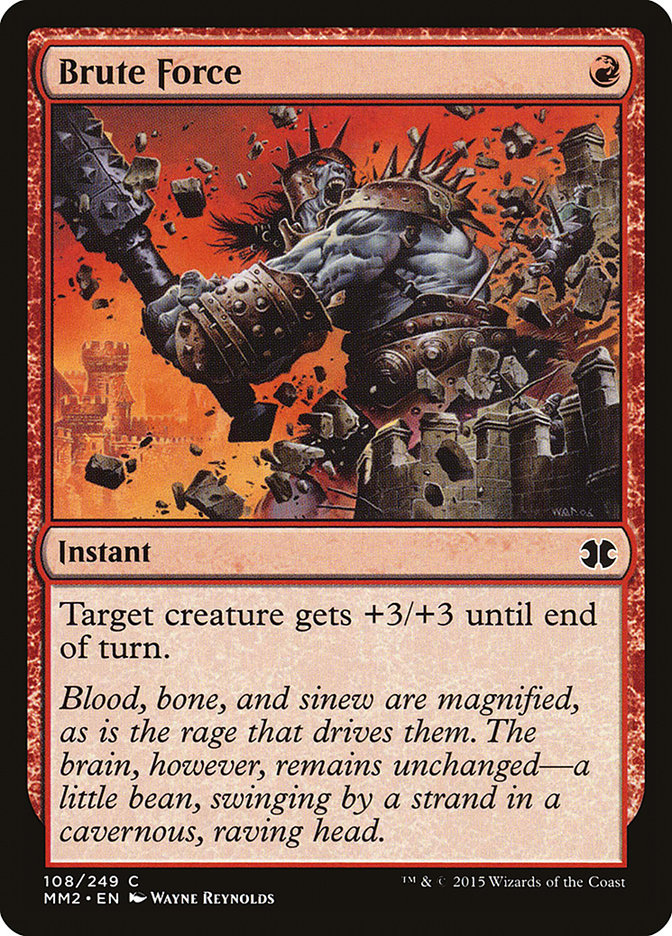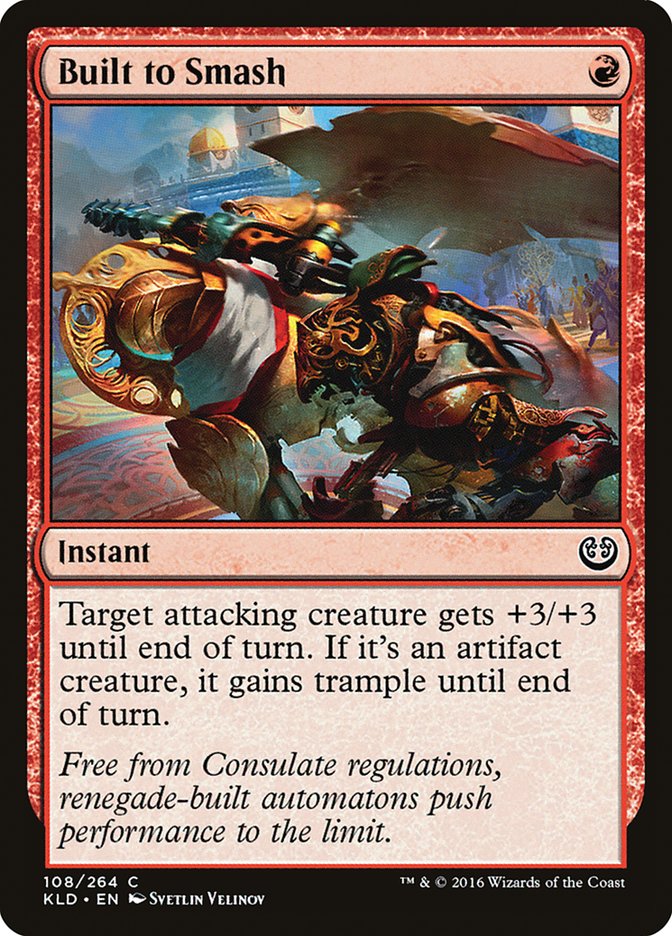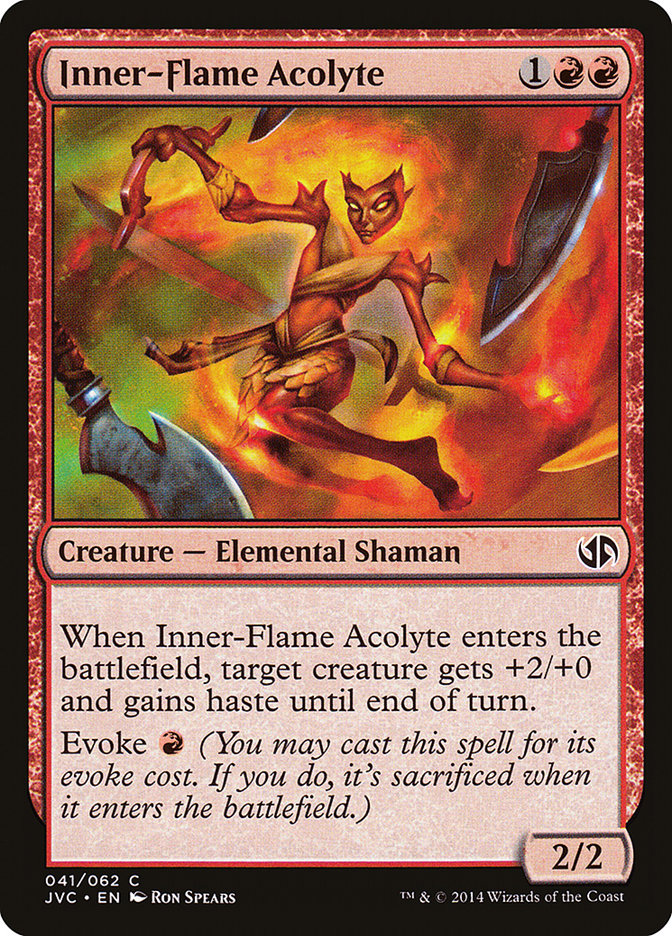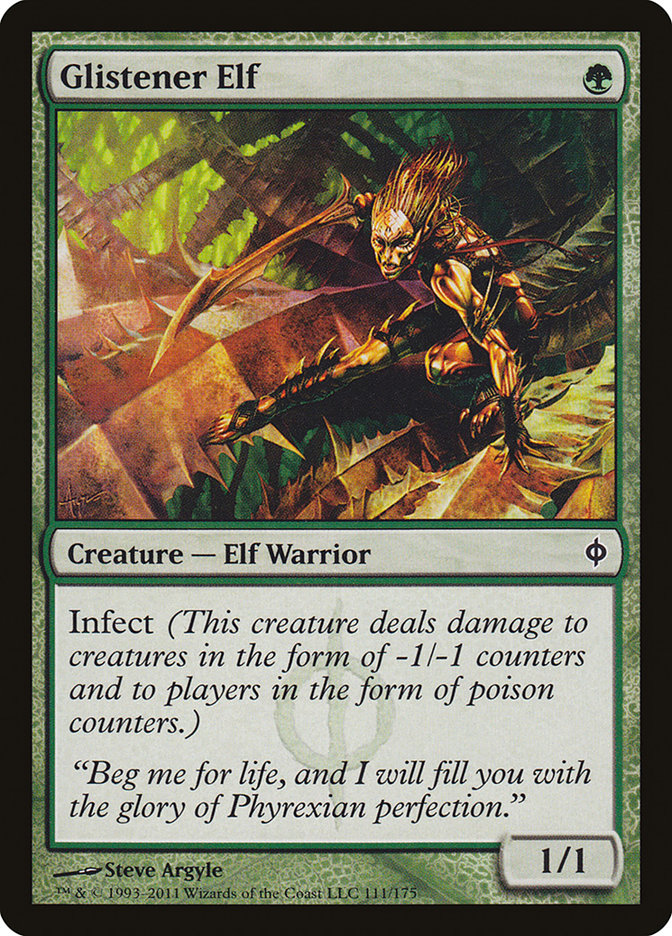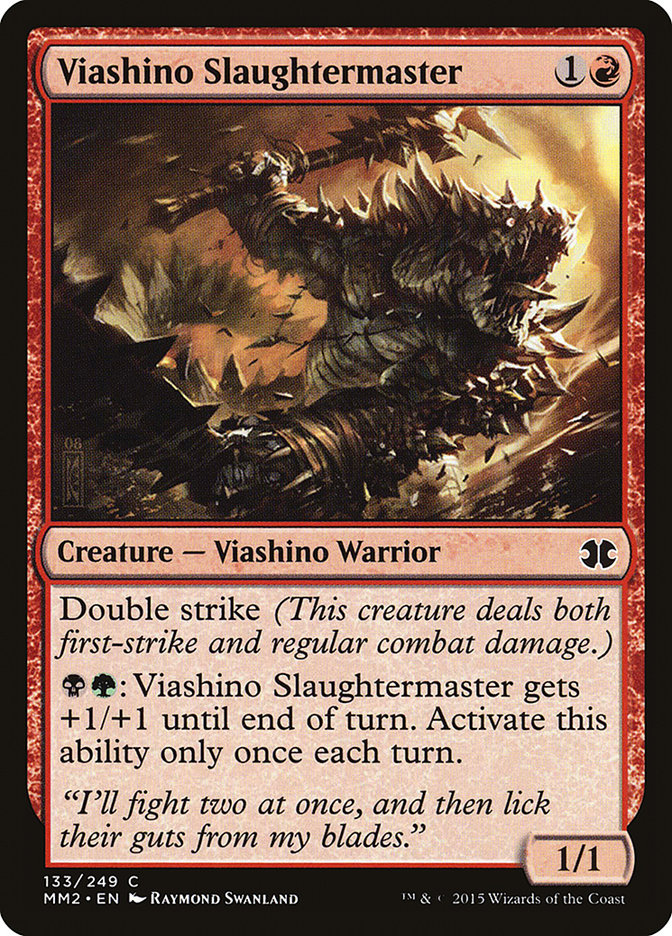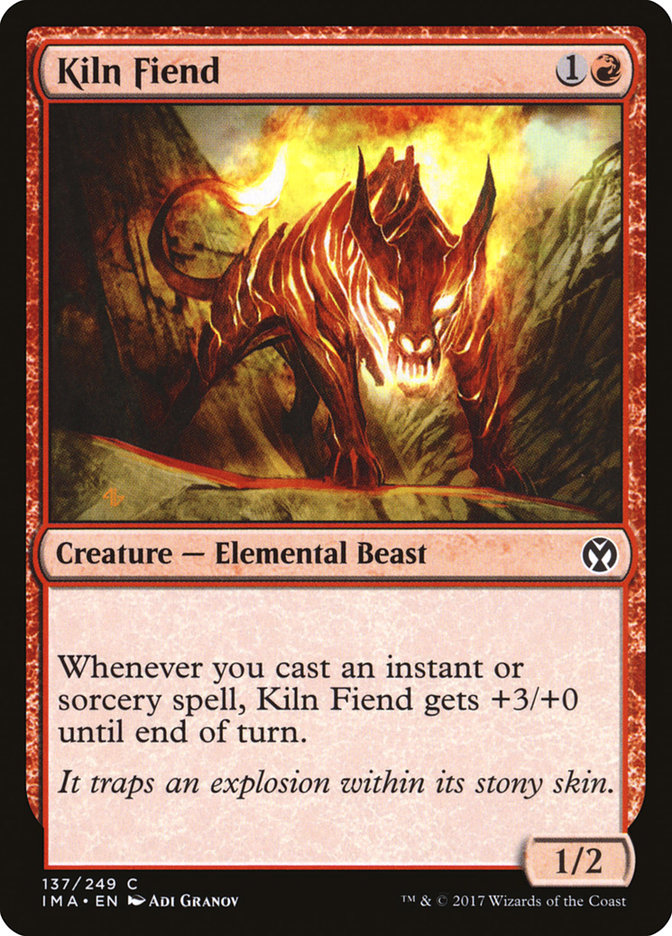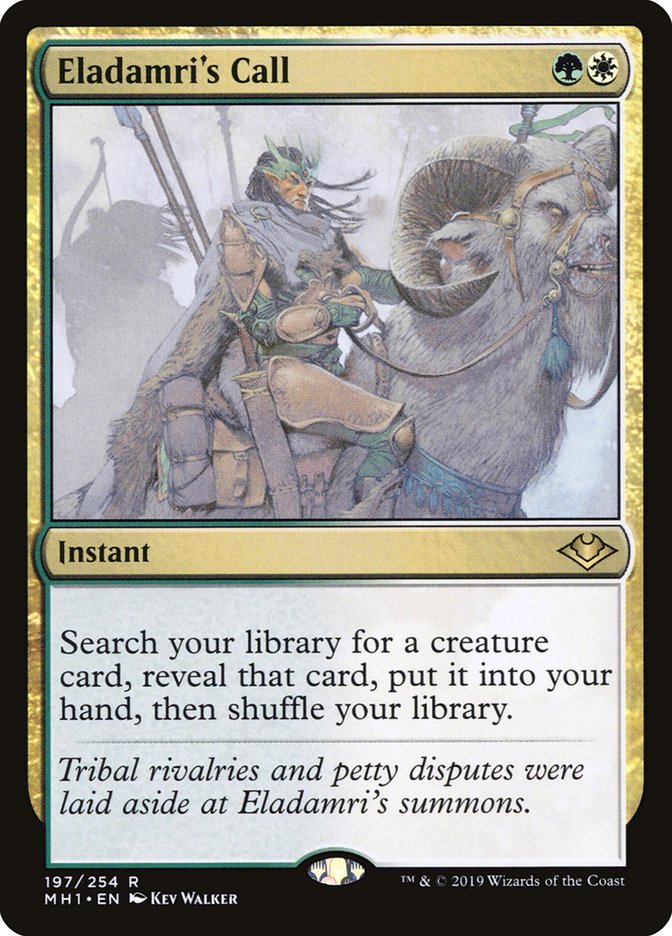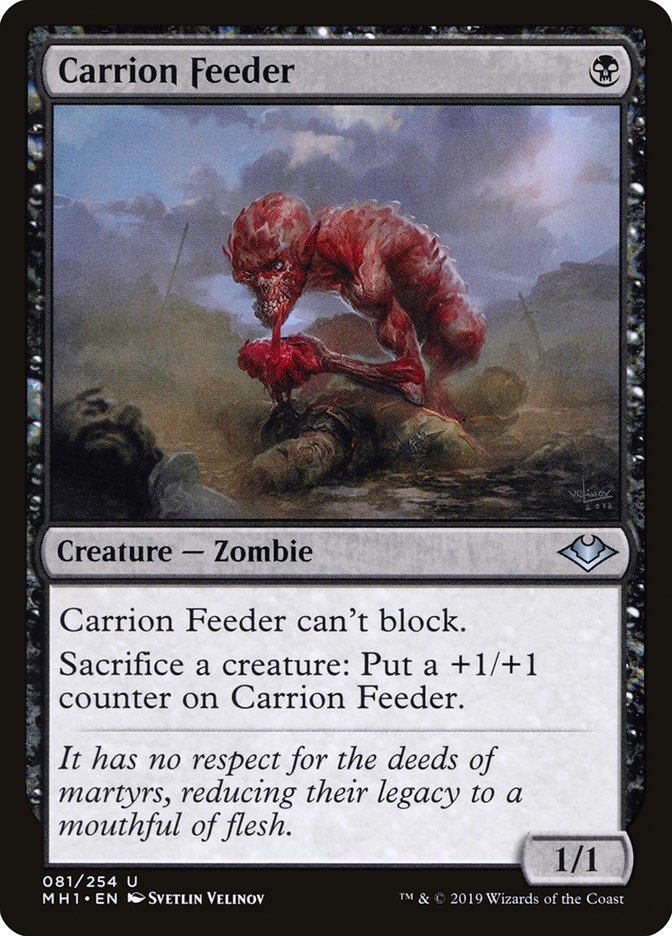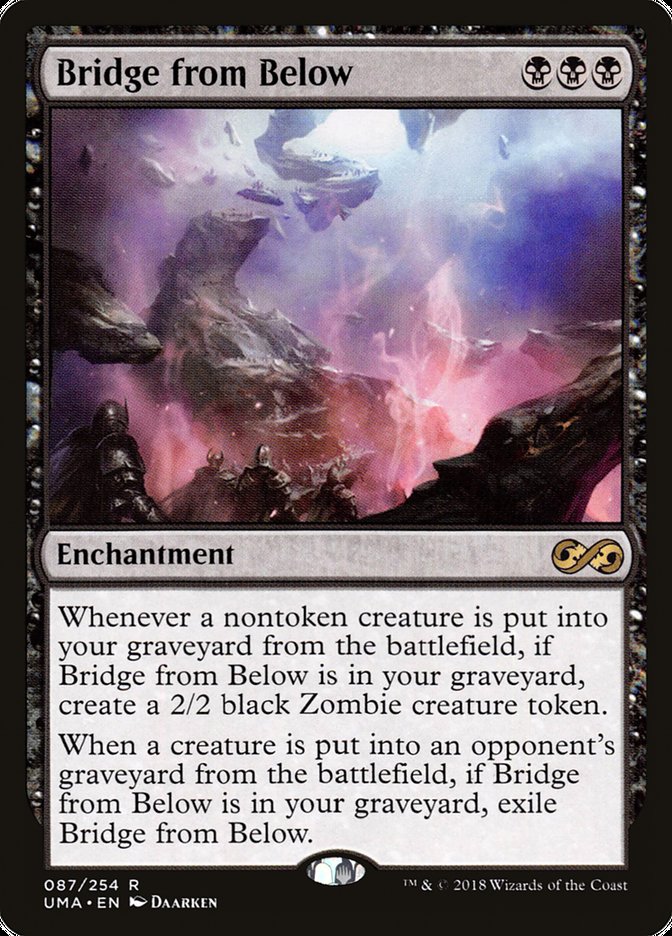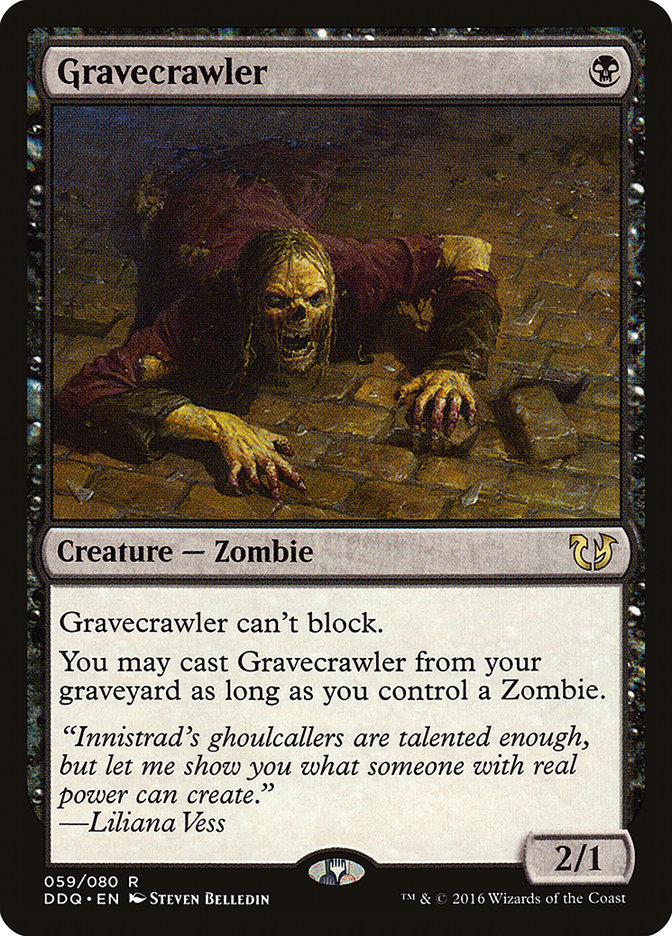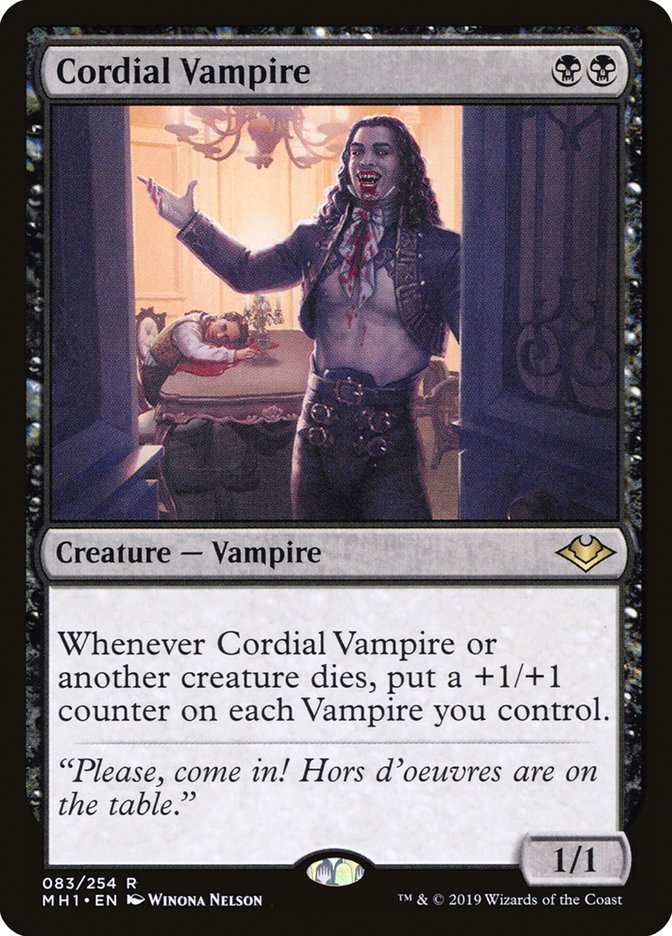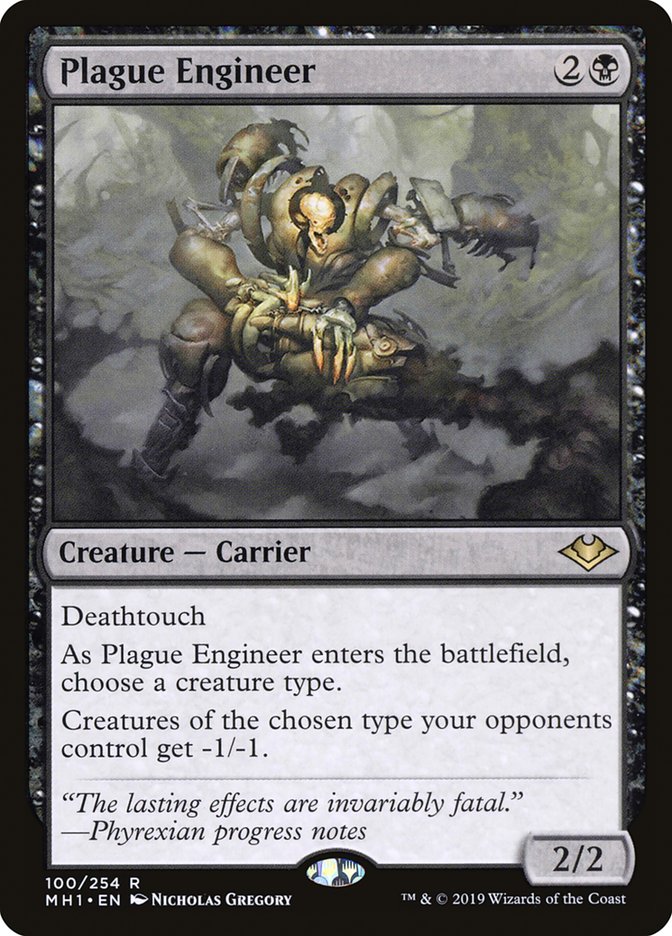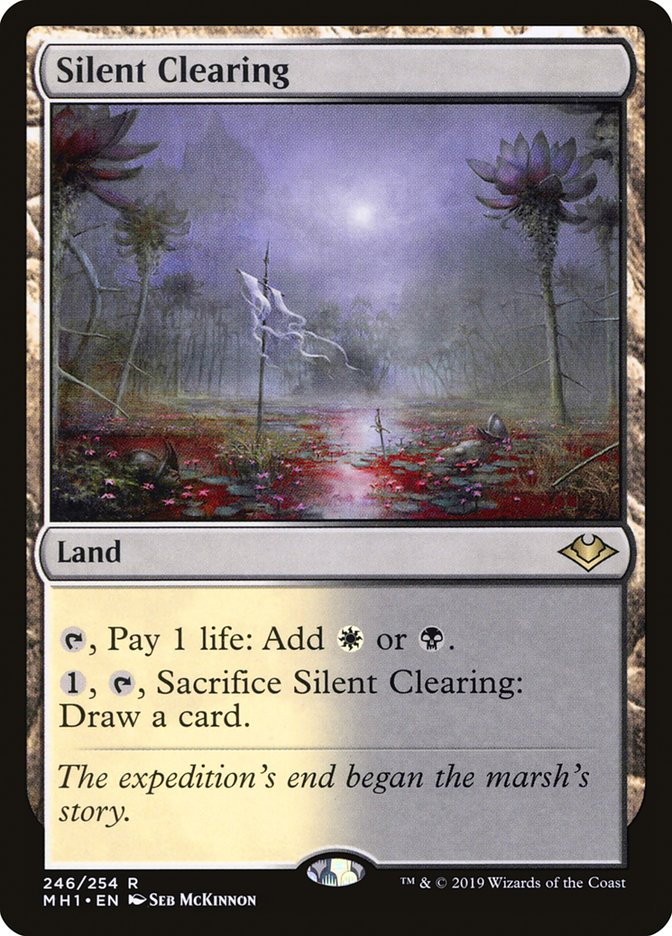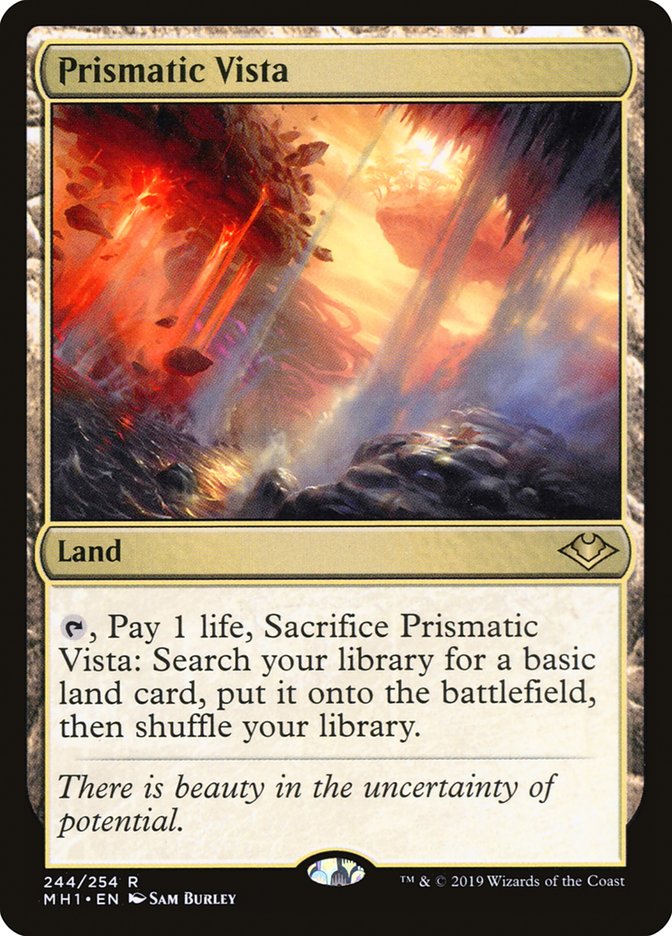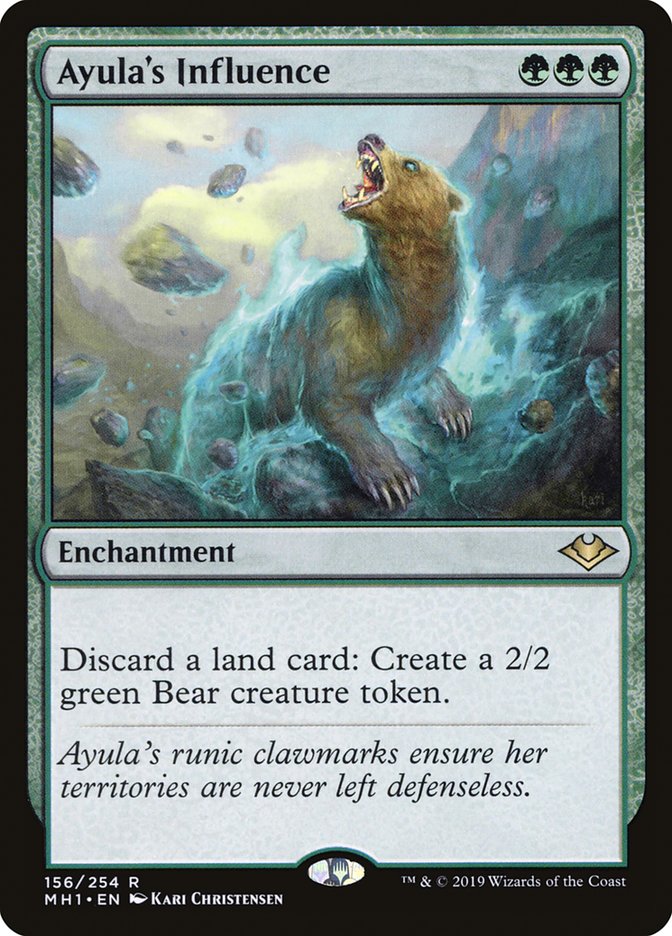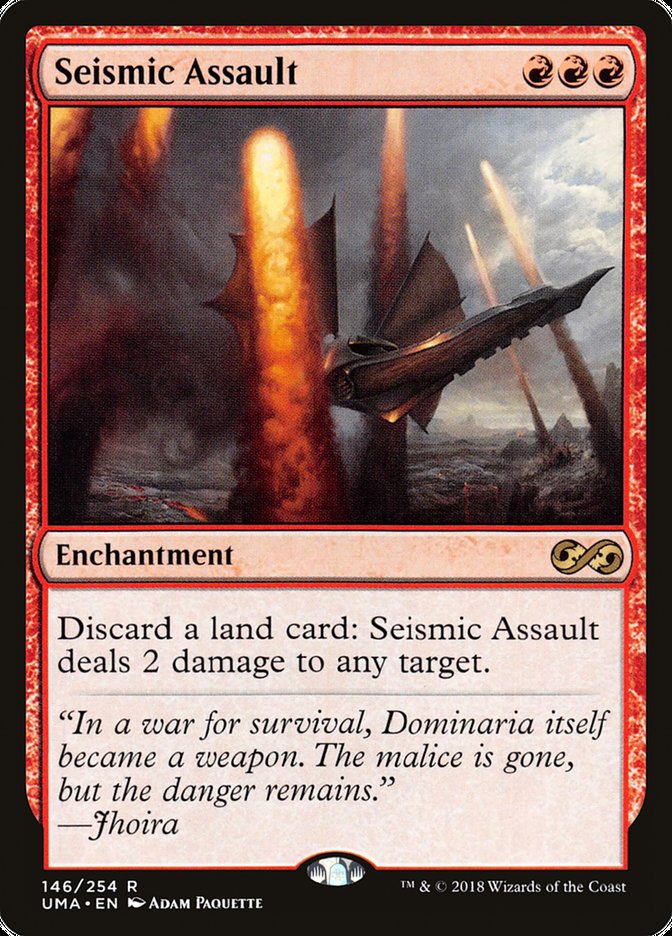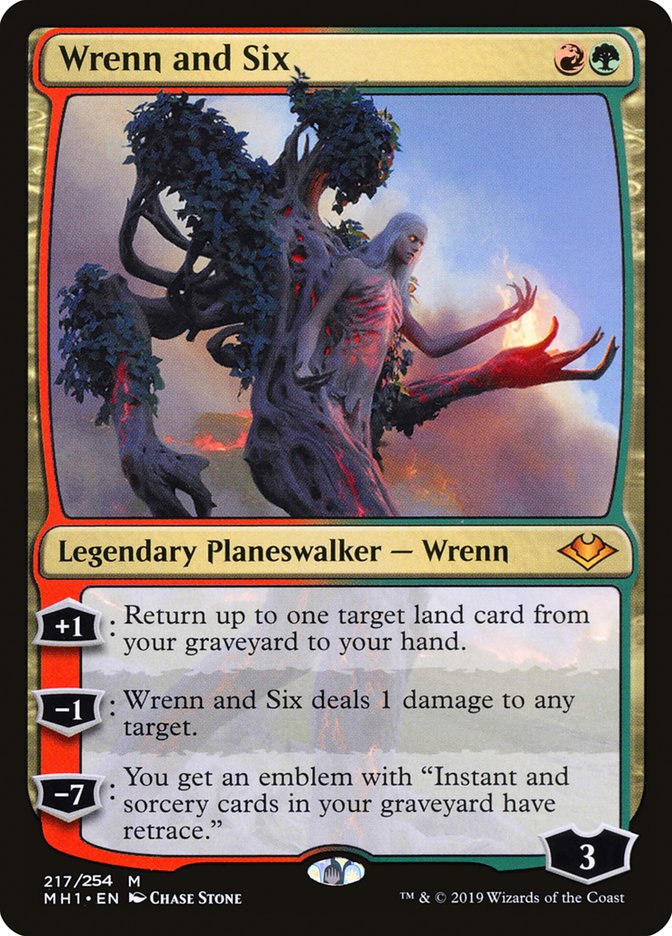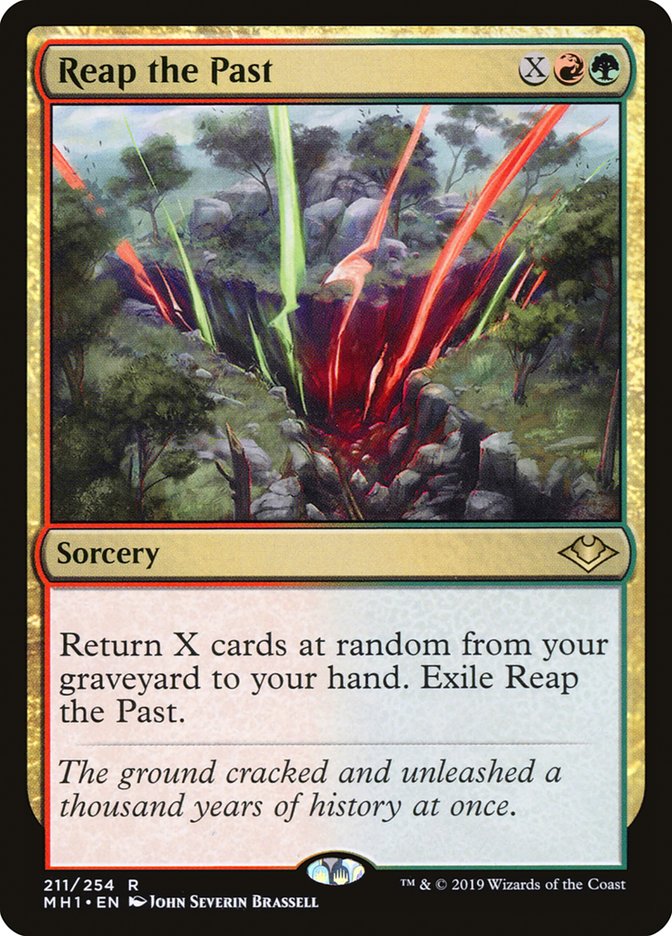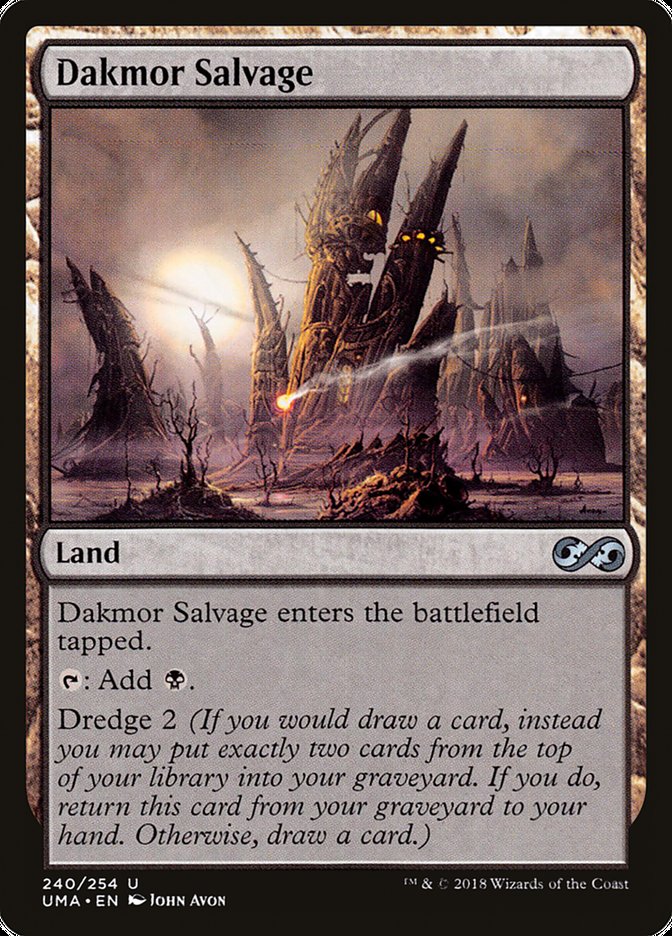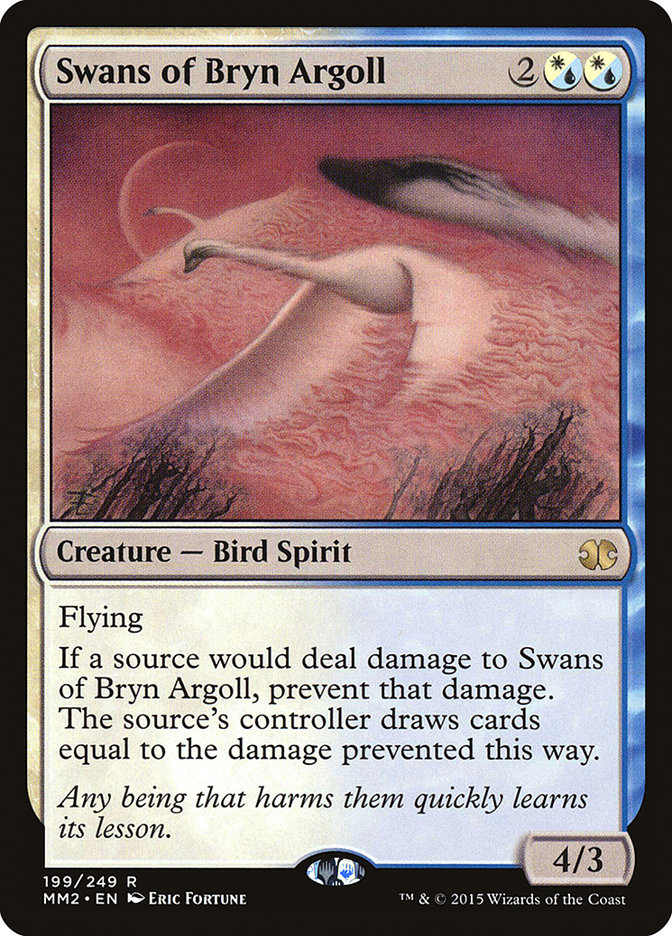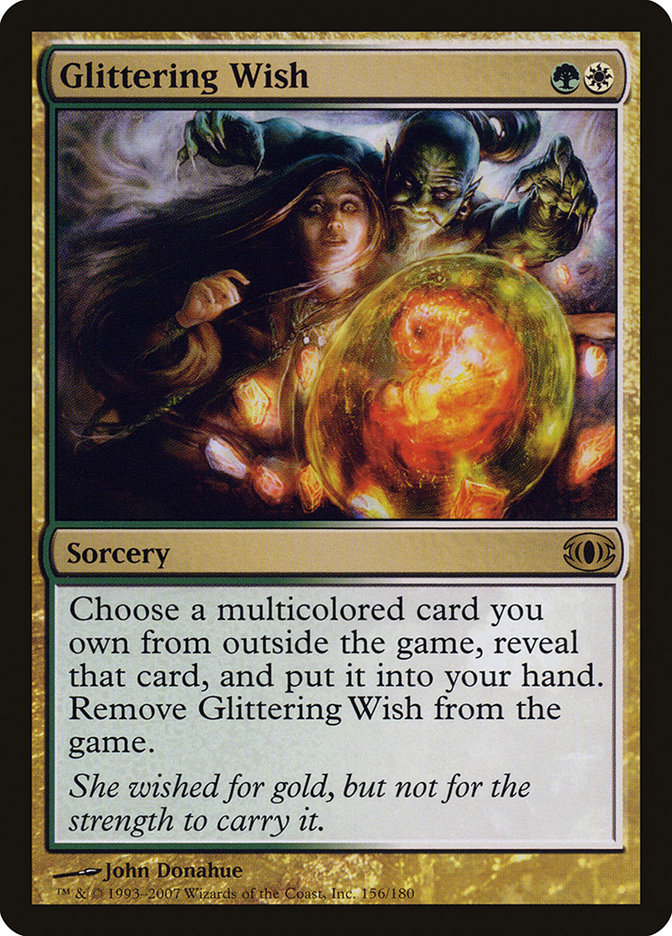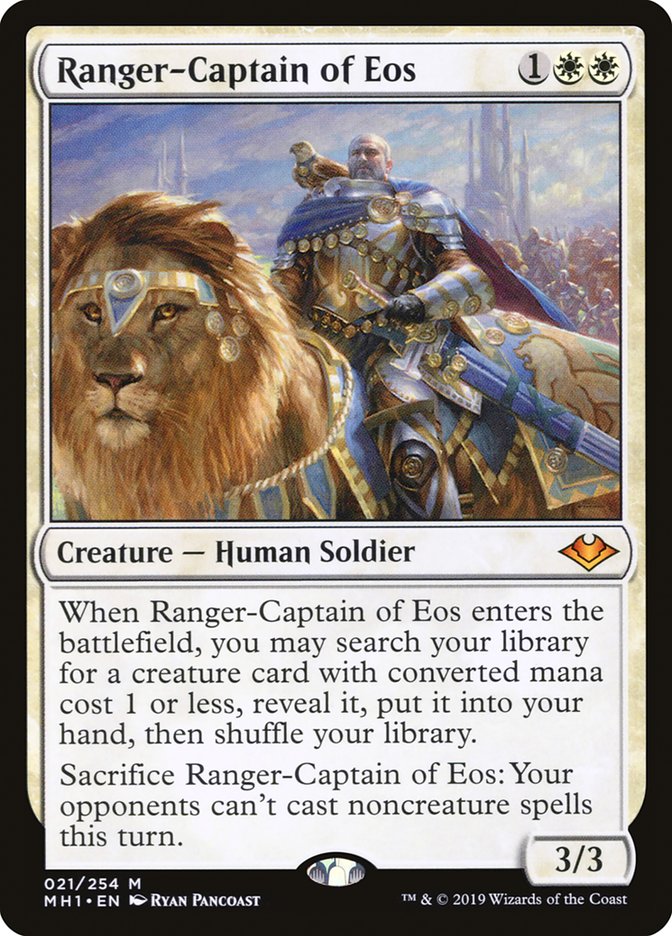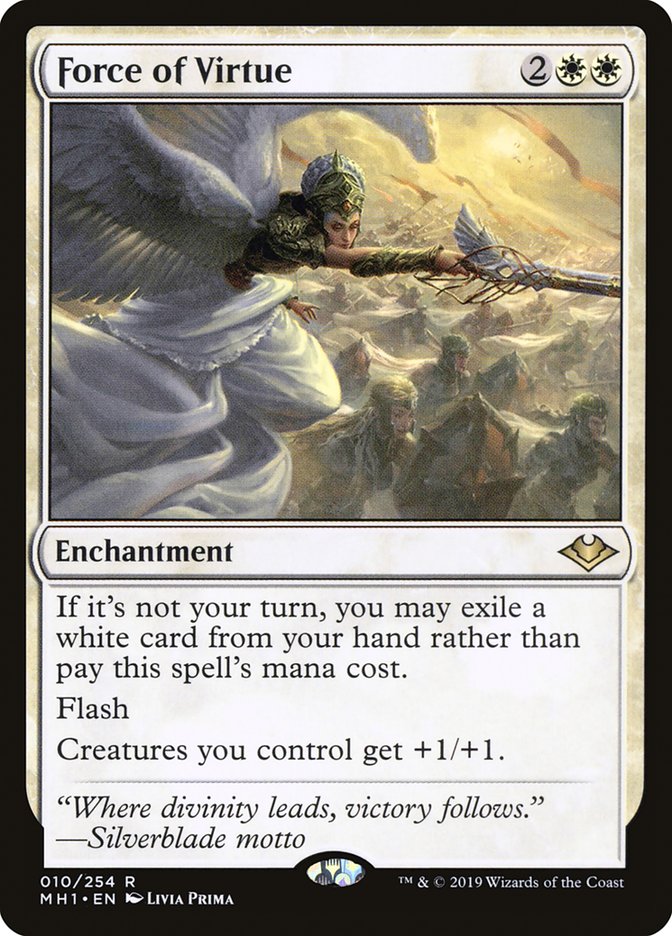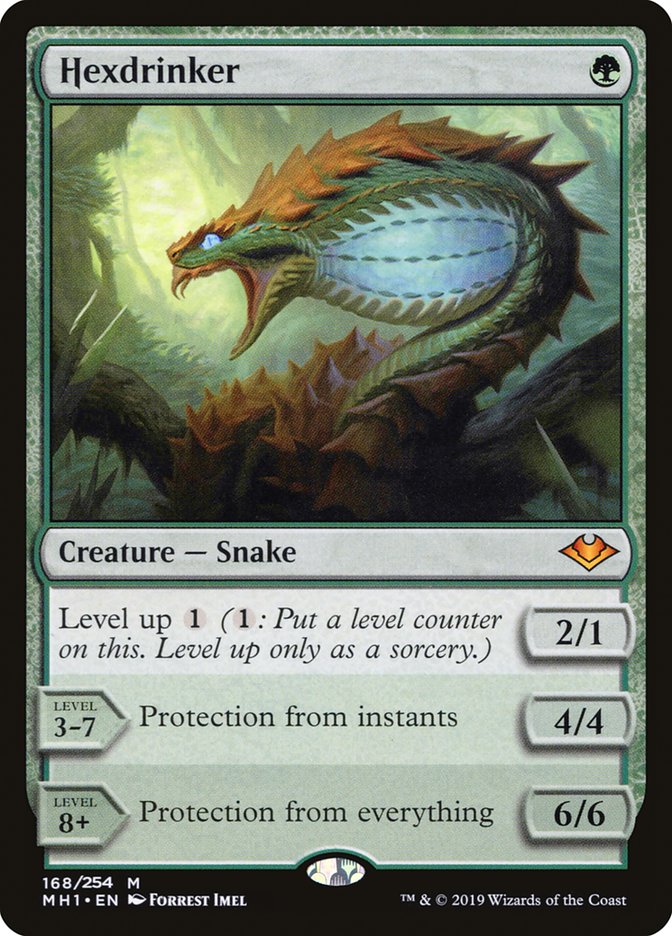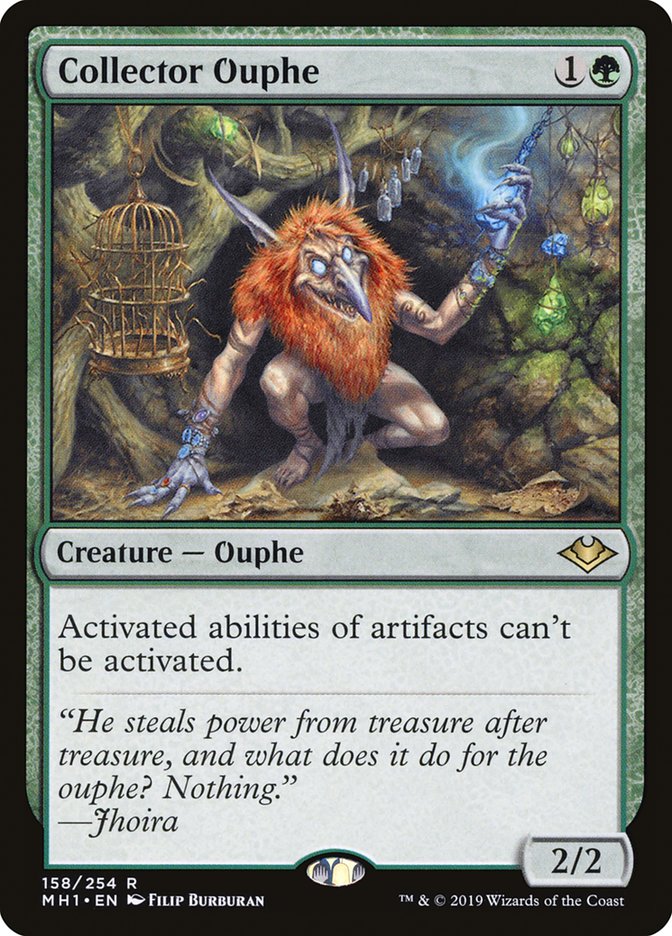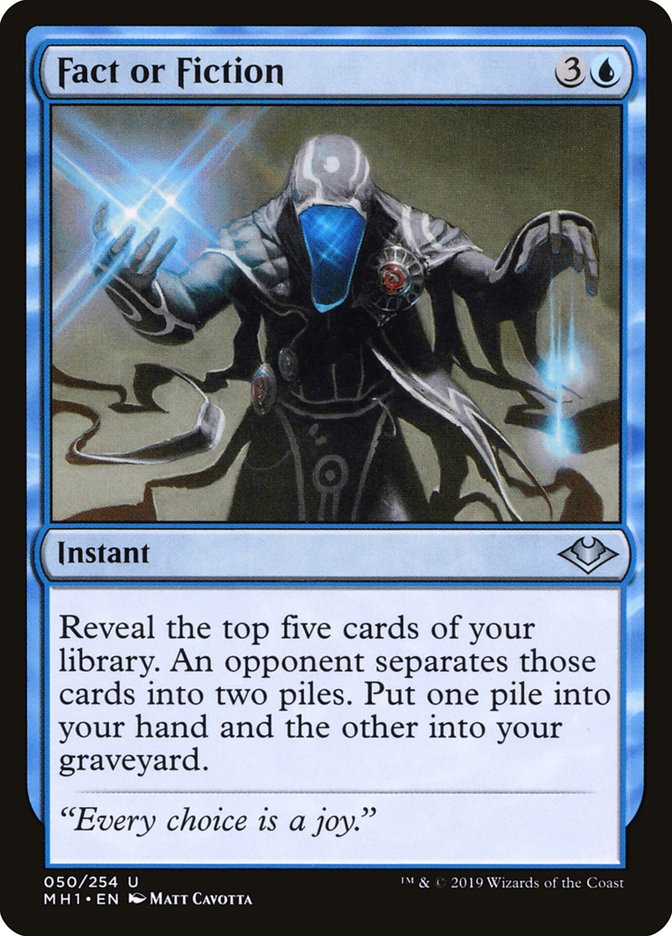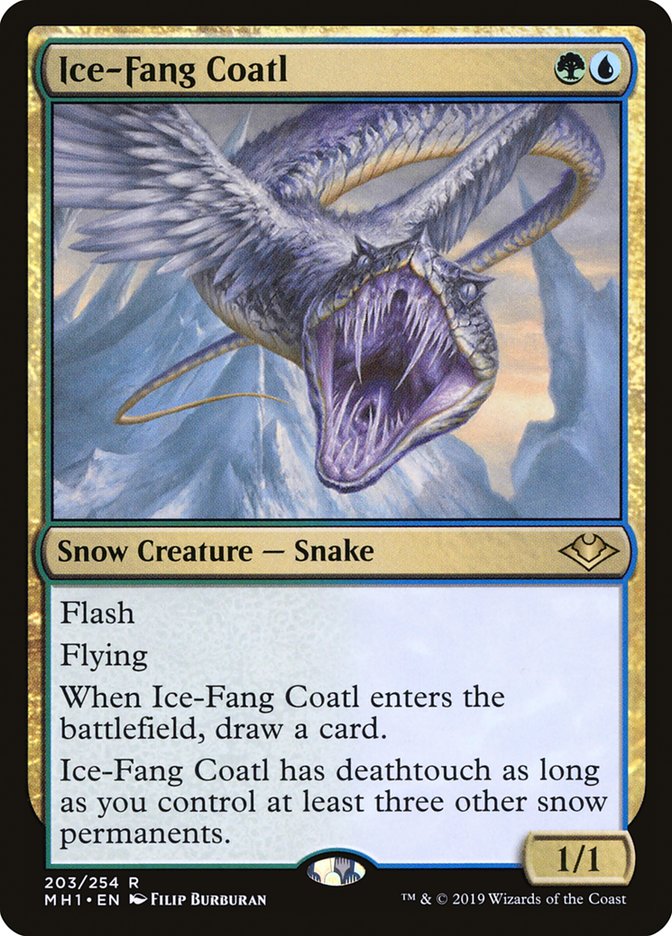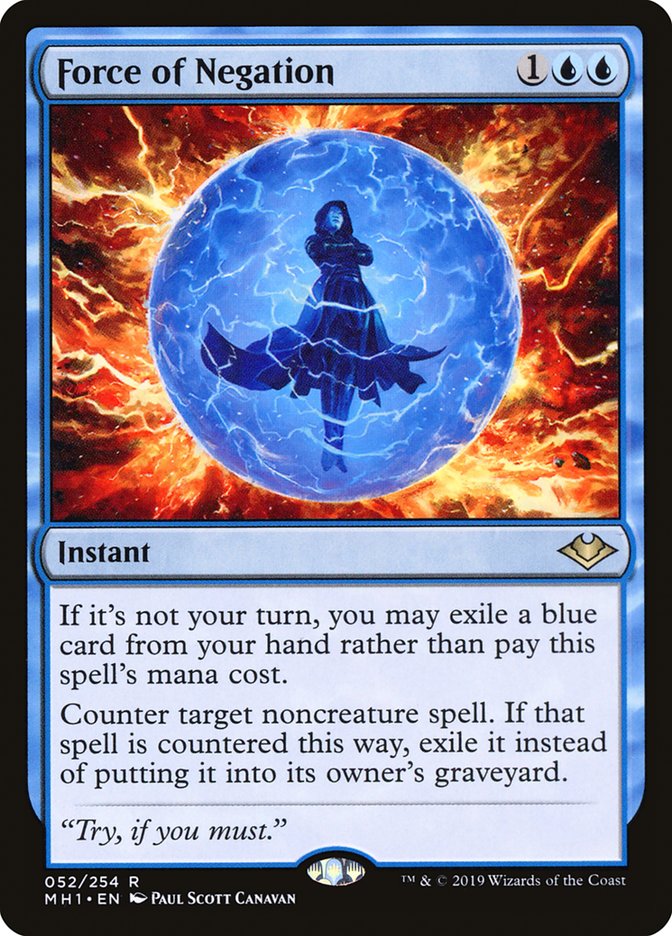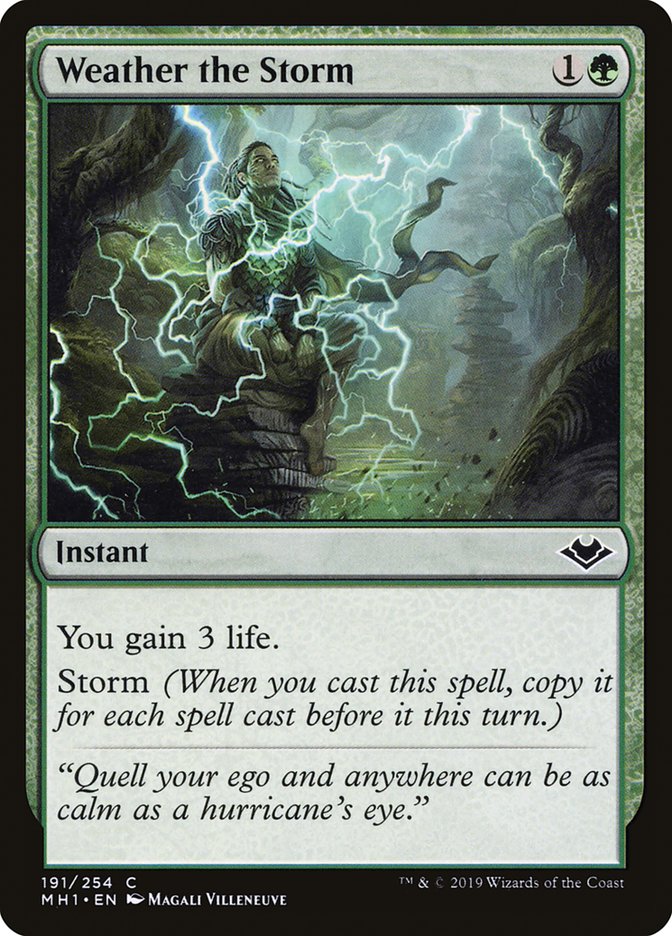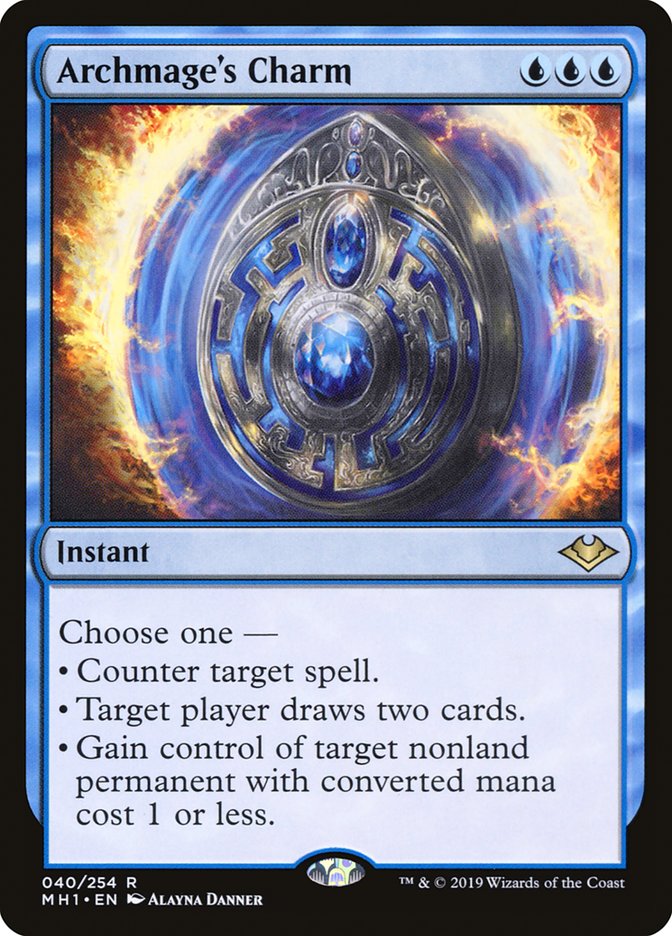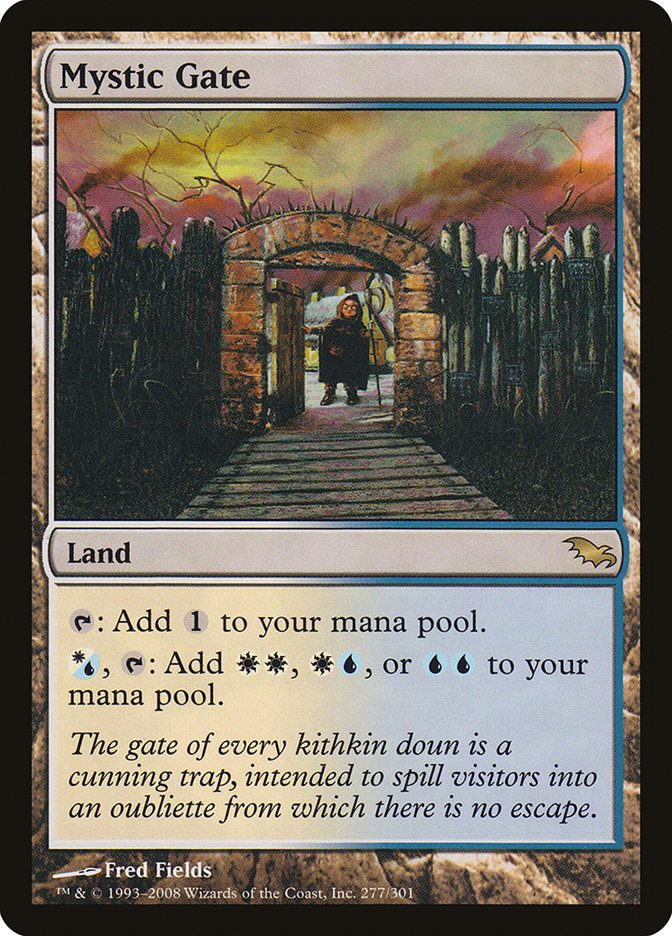Modern Horizons is a different sort of set from what we’re used to seeing. I guess the closest analogue to it might be the Commander products that have cards legal in Legacy without disrupting Standard. Modern Horizons ups the ante by making the cards Modern-legal, rather than just Legacy-legal.
By skipping past Standard, Wizards of the Coast is able to take some liberties that would totally wreck Standard for a couple of years if it were forced to have to adapt to this power level. They’re also able to revisit a bunch of mechanics that wouldn’t make sense in most new sets.
Today, I’d like to take a look at my Top 10 cards from Modern Horizons, a set I anticipate being more impactful than most (which is a good thing, too, because why else would they be going to the trouble?).
10. Reckless Charge
Reckless Charge may look like just another pump spell…
…but it plays quite a bit differently, being both a sorcery and just so much higher of a rate than most pump spells.
In reality, it’s much more like Inner-Flame Acolyte, though the difference between two damage and three damage is a big one. What’s more, the flashback mode really does add a lot of staying power.
The way to think about Reckless Charge is to figure out how much damage it’s going to bring to the table. While three damage now and three damage later is attractive, the vulnerability to creature removal is a meaningful weakness that needs to be overcome. The key is the haste part of the recipe. If you cast a Wild Nacatl and give it +3/+0 and haste, that’s six extra damage now, not three.
Creatures (27)
- 2 Kird Ape
- 1 Keldon Marauders
- 4 Wild Nacatl
- 4 Goblin Guide
- 4 Burning-Tree Emissary
- 4 Experiment One
- 4 Reckless Bushwhacker
- 4 Hidden Herbalists
Lands (20)
Spells (13)

I’m not sure Keldon Marauders is going to prove high-impact enough, but the theory is that combining it with Reckless Charge is especially effective (since normally it only gets one hit in).
Reckless Charge doesn’t have to be constrained to such fair strategies, however. For instance, it could play a central role in some sort of Infect deck or the like.
Reckless Charge can lead to some really explosive openings. I mean, just consider the following.
Turn 1: Noble Hierarch.
Turn 2: Glistener Elf, Reckless Charge, Assault Strobe.
While we could just try adding red as a third color to a more traditional Infect deck, I’d like to keep it to two colors if possible. The mana is just so much better that way. This leaves us with the outstanding issue of what creature to win with besides Glistener Elf and Inkmoth Nexus. We could go the double strike creature route, but that combos poorly with cards like Assault Strobe and Temur Battle Rage.
I wonder if we could make use of Kiln Fiend or Immolating Souleater as our final threat? It doesn’t stack with infect, of course, but the hope is to one-shot people anyway. If the stacking issue proves problematic, however, we could just use more Viridian Corrupters or whatever.
Creatures (16)
Lands (21)
Spells (23)

Sylvan Scrying to find Inkmoth Nexus is nothing new, but finding Kessig Wolf Run seems like an awesome plan if the game lasts more than a few turns.
9. Eladamri’s Call
Eladamri’s Call isn’t busted or anything, but it might be just what the doctor ordered for helping round out certain Chord of Calling combo decks. I mean, once you already go to the trouble of putting together a toolbox, Eladamri’s Call gives you additional ways to capitalize on it. Drawing too many Chords can leave you unable to make plays in some spots anyway. Eladamri’s Call has the added flexibility of letting you pay over the course of two turns (two now for the Call, and then two more when you untap and want to drop your Devoted Druid).
Creatures (29)
- 3 Birds of Paradise
- 2 Eternal Witness
- 4 Devoted Druid
- 3 Kitchen Finks
- 4 Noble Hierarch
- 2 Knight of the Reliquary
- 1 Viscera Seer
- 3 Duskwatch Recruiter
- 1 Walking Ballista
- 4 Vizier of Remedies
- 1 Shalai, Voice of Plenty
- 1 Deputy of Detention
Lands (21)
Spells (10)

Viscera Seer is probably better for this deck than Carrion Feeder, but I could imagine plenty of decks that value Carrion Feeder’s ability to sacrifice itself.
Besides, the stats from Carrion Feeder can really add up when you’re on the backup plan (and can actually be a victory condition themselves), and there’s also the possibility that we might build a deck that wants more than four of this effect.
Carrion Feeder being a Zombie can also come into play when looking to bring back Gravecrawlers in some sort of Bridge from Below / Vengevine deck.
That said, Viscera Seer being a Vampire has new meaning, thanks to Cordial Vampire:
Vampire tribal wasn’t exactly close in Modern, but Cordial Vampire is a fantastic reason to reconsider the strategy. If you get to untap with it, you could easily be capable of an incredible increase in stats on the battlefield. If they kill it, you get to give your whole team +1/+1 for their trouble. If the game stretches out, you might even be able to drop the Cordial Vampire and then burst-kill someone out of nowhere, thanks to how well it plays with Kalastria Highborn and Blood Artist when fueled by zero-mana sacrifice outlets such as Viscera Seer, Stromkirk Condemned, and Bloodthrone Vampire.
Creatures (31)
- 4 Bloodghast
- 4 Gatekeeper of Malakir
- 4 Kalastria Highborn
- 3 Bloodthrone Vampire
- 4 Viscera Seer
- 4 Blood Artist
- 4 Stromkirk Condemned
- 4 Cordial Vampire
Lands (22)
Spells (7)

It also wouldn’t be hard to get a Godless Shrine in there, and maybe some Concealed Courtyards, if we wanted to add Cruel Celebrant to the mix. I could also imagine Lingering Influence playing a role. It’s a powerful card, anyway, and it sure does give us a boatload of sacrifice fodder. If we went such a route, we might also try Indulgent Aristocrat as an additional payoff.
Shatter Assumptions looks like an excellent sideboard card, whether in an aggro deck like this or in something a little more midrange. The impact it will have on Tron, Affinity, Eldrazi Aggro, and various Ensnaring Bridge decks is huge.
One card to watch out for in pushing a new tribal direction is Plague Engineer, but I don’t think it’s going to be all that problematic for most decks. In Modern, many tribal decks are filled with a good number of creatures that are 2/2 or bigger, and Plague Engineer is going to stack a lot less often than Engineered Plague did, thanks to its fragile body. The real value of Plague Engineer comes from being able to be found by Collected Company, Chord of Calling, and Eladamri’s Call.
Just as Horizon Canopy is great for some aggro decks, the same will hold true for these five new enemy Horizon lands. One thing to keep in mind, though, is that you really don’t need to play four if you’re taking too much damage. The card has diminishing returns, and it’s totally fine to play one, two, or three copies, if needed.
While I did want to use a mix of fetchlands in the list above, I skipped Prismatic Vista, as it kind of lets the cat out of the bag about there being no splash. The black fetchlands all could threaten to find a Godless Shrine out of nowhere, and the information edge is surely worth more than the tiny Pithing Needle equity, or whatever.
8. Ayula’s Influence
Ayula’s Influence doesn’t completely sidestep interaction the way Seismic Assault does, but it does have a little more raw power.
In general, a 2/2 flash creature is worth a little bit more than a Shock. It takes just a single hit to get your two damage, and then you’ve still got the Bear. What’s more, it can give you much needed chump-blockers, and on the whole Ayula’s Influence looks a lot stronger to me than Seismic Assault itself. We could try building with both, but I’m not sure we want to do that to our manabase.
Creatures (4)
Planeswalkers (6)
Lands (29)
Spells (21)

This brings us to number seven on our list:
7. Wrenn and Six
Wrenn and Six are discussed at length here, but the card is very worthy of taking a spot on the list today.
Reap the Past could be an interesting sideboard option for Jund decks, whether exotic, like the above, or more traditional. It’s a Mind Spring for a color combination that doesn’t usually have access to such a thing, and there’s even some amount of selection involved (sort of).
One other possibility to consider with Ayula’s Influence is pairing it with Beck // Call. Once you cast Beck, every Bear you make will draw another card. It’s not unreasonable to think you might just draw twenty cards, right there, and if your deck contains a very unusual amount of mana, you might not be far from drawing your whole deck (especially if you’ve got a couple of Dakmor Salvages somewhere in the mix, making it completely deterministic that you mill your deck, fill the battlefield, and set up some graveyard kill).
Once you have the Salvage, you can just discard it and dredge it back, over and over, similar to how Swans of Bryn Argoll was used nearly a decade ago.
Swans of Bryn Argoll can be combined with Seismic Assault to convert every land into a draw-two. Get a Dakmor Salvage in the mix, and now you’re drawing your whole deck (and easily dealing enough damage to kill your opponent).
Creatures (3)
Lands (37)
Spells (20)

Glittering Wish can find Swans of Bryn Argoll, sure, but it can also find Beck // Call, making it work with either of your three-mana enchantments.
Speaking of tutors…
6. Ranger-Captain of Eos
Ranger-Captain of Eos looks excellent to me. Coming down a turn earlier than Ranger of Eos is such a big upgrade, and the sacrifice ability buying you a turn against combo decks or decks with Supreme Verdict is huge.
Creatures (27)
- 4 Soul Warden
- 1 Martyr of Sands
- 2 Ranger of Eos
- 4 Soul's Attendant
- 1 Serra Ascendant
- 4 Ajani's Pridemate
- 4 Squadron Hawk
- 2 Archangel of Thune
- 1 Thraben Inspector
- 4 Ranger-Captain of Eos
Lands (22)
Spells (11)

This list riffs on the concept laid out by Tom Ross here. The use of Force of Virtue really stands out to me, and I’ll want to use it a wide range of decks.
For instance, is it crazy to sideboard or even maindeck Force of Virtue in a Humans deck? It shouldn’t be hard to cast, and the tempo advantage it affords seems great. Besides, talk about a perfect answer to Plague Engineer!
Creatures (35)
- 4 Meddling Mage
- 4 Noble Hierarch
- 4 Phantasmal Image
- 4 Champion of the Parish
- 3 Thalia, Guardian of Thraben
- 4 Mantis Rider
- 4 Reflector Mage
- 4 Thalia's Lieutenant
- 1 Thalia, Heretic Cathar
- 3 Kitesail Freebooter
Lands (19)
Spells (6)
Sideboard

5. Hexdrinker
One of the Ranger-Captain of Eos targets I am most excited about is Hexdrinker. It’s cheaper and easier to operate than Figure of Destiny, and the creature it levels up into is a much more durable threat. Besides, it curves so perfectly with Ranger-Captain of Eos. If you go find it on Turn 3, you can drop it and immediately level it up into a 4/4 with protection from instants on Turn 4.
As if that wasn’t enough, Ranger-Captain of Eos could lock your opponent out on their next turn, letting you untap and potentially level Hexdrinker all the way up. There are a lot of decks that aren’t going to be able to deal with a 6/6 that has protection from everything.
Creatures (26)
- 4 Tarmogoyf
- 4 Wild Nacatl
- 4 Goblin Guide
- 3 Thalia, Guardian of Thraben
- 4 Ranger-Captain of Eos
- 3 Collector Ouphe
- 4 Hexdrinker
Lands (22)
Spells (12)

While Collector Ouphe may prove to be more of a sideboard card than a maindeck one, it’s such a powerful new hatebear, I at least want to try it.
4. Collector Ouphe
If Zoo is going to make a comeback without just aspiring to be some Death’s Shadow-style fast kill deck, it’s going to need some interaction or disruption.
As for other homes, it kind of speaks for itself. Locking out artifact mana, Chromatic Spheres, Expedition Maps, Engineered Explosives, Aether Vial, equipment, Oblivion Stone, and more, Collector Ouphe really is just a 2/2 Stony Silence. Just remember that, like Stony Silence, the effect is symmetrical.
3. Fact or Fiction
It would have been basically impossible to talk about any of these next three without bringing up the other two. They are kind of a package deal, and dear lord, are they about to bring blue control back in a big way.
Fact or Fiction is an amazing pairing with Cryptic Command, as it makes for such an effective way to put your four mana to use, when they don’t play into you. The tricky part is that you can only play so many fours, and there is no shortage of attractive options.
While Fact or Fiction can be used in a lot of traditional decks, there’s enough new stuff that some of our assumptions about what control decks even look like might need to be reexamined. For instance:
Creatures (12)
Planeswalkers (3)
Lands (23)
Spells (22)

The real wildcard here is of course Ice-Fang Coatl.
Ice-Fang Coatl is kind of a flying Elvish Visionary, but if you have just three snow lands, you’re upgrading it into Baleful Strix with flash. That’s an absolutely unreal rate, and while limiting ourselves to so many basics and ways to find them isn’t trivial, that really is a great payoff.
Prismatic Vista really shines here. Having access to eight fetchlands that can find both Snow-Covered Island and Snow-Covered Forest is great, especially when we’re trying to keep our Breeding Pool count down.
Yeah, we’re not going to have deathtouch enabled on Turn 2, and not necessarily on Turn 3, either. I just don’t know that we need to. I mean, it’s nice, of course, but do we actually need it to have deathtouch Turn 3? We still draw the extra card and everything.
As for something more dedicated, I’d check out Sam Black’s Five-Color Niv-Mizzet Reborn / Bring to Light snow deck. It’s going to take some work, but he goes into great detail on the strategy here.
2. Force of Negation
Force of Negation is discussed at length here, but the short version is that it looks like a very solid Negate variant that happens to be especially attractive for combating fast combo decks. It will see heavy sideboard play, and when the metagame shifts towards fast combo, it’s a fine maindeck card.
While we’re looking at the sideboard, Weather the Storm is another important new addition from Modern Horizons. It just gains such an absurd amount of life for so little mana, it’s going to be a backbreaking sideboard option against Burn and an invaluable tool against aggro. For instance:
Creatures (5)
Lands (24)
Spells (31)

In a deck like this, Weather the Storm is absolutely breathtaking, easily building up a storm count and buying a ton of time. I could easily imagine moving it to the maindeck, and depending on the shape of the format, it’s not even clear we couldn’t play multiples.
As a side note, Snow-Covered lands are where it’s at now for Simic decks. Why let them know you don’t have Ice-Fang Coatl?
1. Archmage’s Charm
In a surprise to nobody, Archmage’s Charm is the card I’m most looking forward to jamming from Modern Horizons. Blue decks have had an opening on three for a while and a lack of quality hard counters short of Cryptic Command. Archmage’s Charm is extremely pushed, a solid permission spell, a good way to build card advantage for hitting land drops, and a fantastic tool against Death’s Shadow, Wild Nacatl, Goblin Guide, Pyxis of Pandemonium, Champion of the Parish, Aether Vial, Delver of Secrets, Hardened Scales, Amulet of Vigor, Benthic Biomancer, Glistener Elf, Noble Hierarch, Viscera Seer, and sometimes even Hexdrinker (just to mention a few).
The biggest constraint of Archmage’s Charm is, of course, that triple blue requirement. It’s going to make it a lot harder to play colorless lands like Field of Ruin, and it’s going to give us extra reason to consider filter lands like Mystic Gate.
That said, we don’t have to completely flip the table or anything. For instance, what about:
Creatures (4)
Planeswalkers (2)
Lands (25)
Spells (29)

Everybody’s so caught up on Teferi, Time Raveler that we might do well to sidestep that entire topic. That said, Archmage’s Charm would also work well in those decks, too. We’re going to want to be mindful of how many threes we play, but there’s also nothing wrong with playing just two or three Archmage’s Charms, if that’s all we have room for. It’s a very strong card, but Azorius has access to a lot of very strong cards these days.


